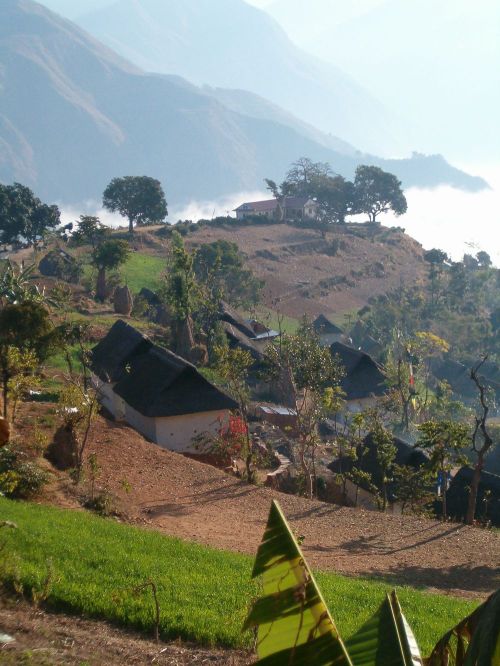We always worked in cooperation with people and community to increase capacity. Here two success stories.
Sixty families of freed Kamaiya Tharus and internally displaced have turned the Janahit Mahakali Community Forest into a model for grassroots forest management. In a forest north of the East West Highway, where trees were depleting due to massive deforestation by wood mafia and erosion, the community has planted over 8,000 bamboo, timber and hardwood trees since 2004. Locals have also benefitted by producing more than a hundred tonnes of ginger. This unique system of agroforestry has raised living standards, while conserving forests. The community has donated Rs 100,000 to the nearby Udaya Higher Secondary School to provide free education for students from the ninth to twelfth grade, and Rs 40,000 to Kanchanpur Campus all from the sale of forest products. Members of the community can buy oxen on interest-free loans, flood control embankments have been built, VDC roads have been gravelled and a new child welfare centre built.
The chairman of the group adds that one of the biggest achievements has been the protection of the forest and wildlife. “We haven’t just protected trees,” he says, “we have seen more deer than ever before and even tigers and leopards have returned.”
In 2006 we started the electrification project in Timal and set TCRECA (a local cooperative) in order to mobilise community and manage the local grid which now is covering 3 VDCs and in construction for other 4. We help the local cooperative to born and now they are proceeding by themselves.
No wonder, as many as 65 communities across 38 districts are engaged in the scheme. They are not only self-reliant but also act as watchdog against pilferage of energy. As per the Community Electrification Distribution by-laws 2060, the programme follows a 20-80 policy (community contributes 20 per cent of the total project cost and the government picks up the tab for the rest) . Over the years, the programme has worked wonders. It has promoted public participation, encouraged community management and also harnessed technical and managerial skills of the rural folks.
Here is a case in point to bolster this argument:
Of a total budget of Rs 20 million, South Lalitpur Rural Electrification Cooperatives contributed Rs 4.7 million in the first phase.
Over the past six years, the programme has lit up 2,500 households in 14 remote Village Development Committees.
“Record reveals that very few households had access to electricity before the scheme was launched. However, we had to incur technical losses, thanks to the rugged terrain, elaborate network for transmission lines and high voltage transformers,” said Govinda Bajagain, managing coordinator of the cooperatives. The initiative has transformed the local economy. It now helps to run mills, furniture factories and computer-aided schools. “We have deliberately kept the profit margins low. We buy power at Rs 3.60 Kwh and sell it at Rs 4 Kwh,” he added.
















